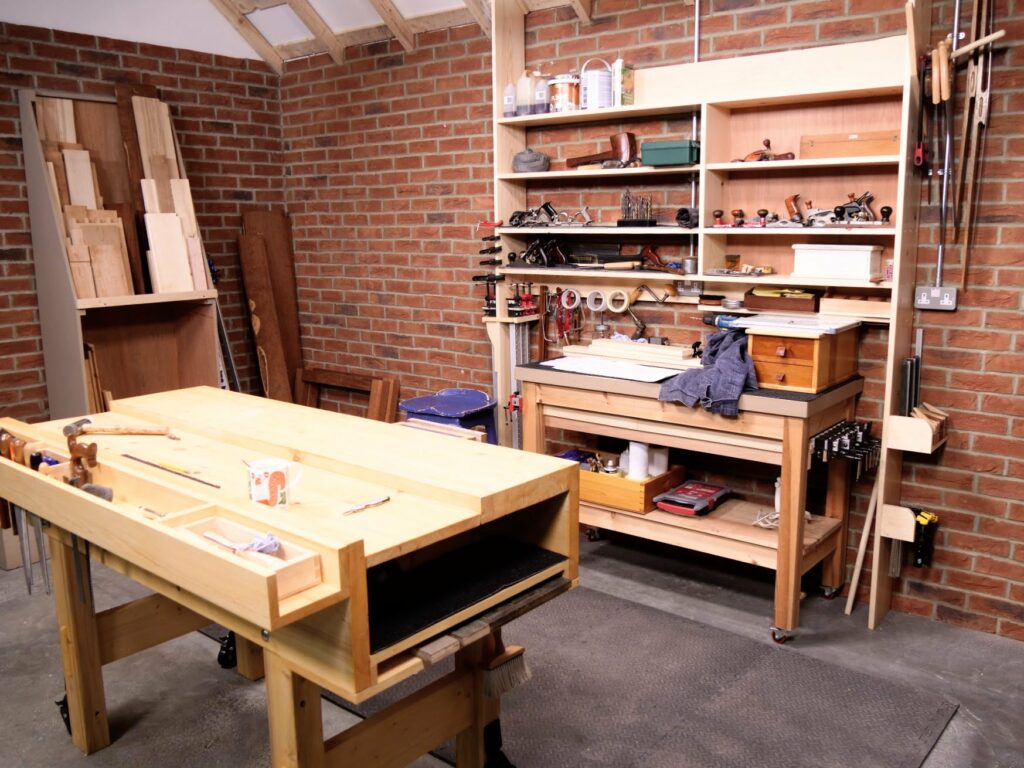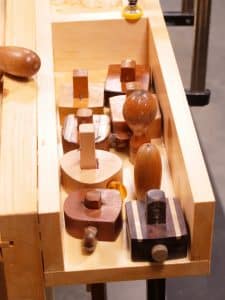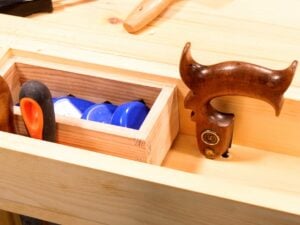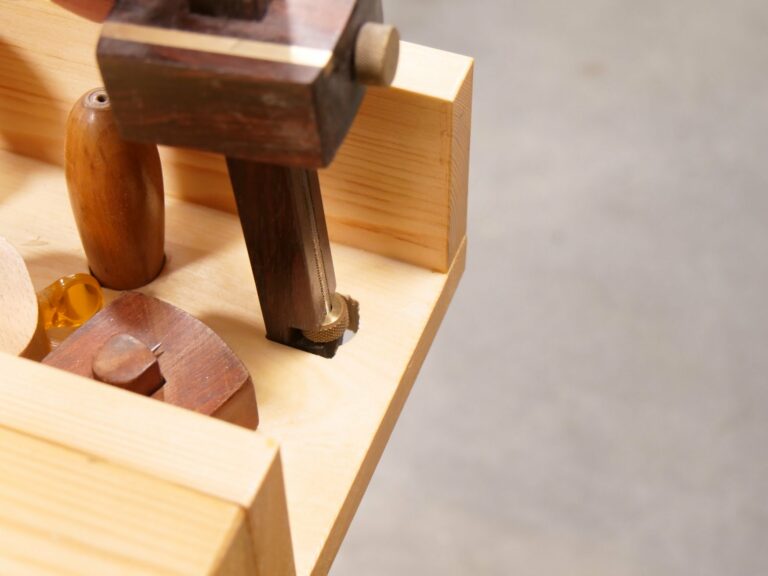Fitting Things!
It’s fitting for a workman to establish things. As a boy I watched men do this from time to time. People then didn’t flit, they stayed. By that I mean from job to job, place to place, change homes, such like that. They simply established themselves and stayed. Sometimes a new man came. There were no such things then as teams and team players. Silly nonsense speak. You were just a workman and you came to work to do your job. Teams were for sport. It was a long stretch for a joiner to become a team member and a team player. When the new man came he “set his stall out.” at a given bench by the foreman. All around him were established by years at the same benches and they had made their moves up the ladder via better situated benches as one man left or died. The new man got the darker corner with the most interrupted space. In time he’d be accepted and eventually move up a bench notch to a better light.
In my case I became self employed in my early 20s. That gives you inalienable rights as a master of your own work and your future. No one tells you any more to come or go or to “set your stall out”. You own everything. This is the wonderful thing about being a lifestyle woodworker, otherwise known as an amateur. You get to do things according to your will, according to your means and according to what you feel best engenders the fine workmanship you strive for. You also take ultimate responsibility for all that happens. Now tell me this. Where would you read such a thing?
The past day and a half I’ve given myself the absolute the occasional hour of luxury placing my tools in the exact spot where I want them. 


The distance for me is very different. All of my work is governed by the benchtop and the vise itself. There’s no triangle as such. The vise is my third hand and the workbench my anchor. they are an extension to my own hands and body. The worktop tends to become more crowded the longer the day goes on. Having a place for each tool helps me to organise them and to then keep organised. As they are constantly pulled to task minute by minute, having their permanent places directly attached or located on the bench itself is just plain practical and easy. In a compact place like a garage or shed, space is at a premium. Organising not only the tools but the way they hang is very helpful. My joinery saws, planes, layout tools and chisels are barely two feet apart. Dead simple and easy. Because I sharpen up many times a day, my sharpening plates and strops go where they have been for decades. After the video we made on some of the bench upgrade I went back in to refine my work; micro-adjusting the little details. Rasps and files found their home, as did flathead screwdrivers and chisel trays, scrapers, my combination square and my tape measure box. I have my lesser used chisels there in front of me but having the chisel tray means I can pull the size out that I want or I can pull out the whole tray and place it in the well. Other tools are immediately behind me, still only a spin on the heel to reach them out.


Recognize your points. Am enjoying it more and more that I can blindly find my tools, without having to make eyecontact with them first, simply by routine. Many tools are not in the most efficient place (in the time-and-motion-study sense of the word), but, once habit is formed, it comes pretty close to optimal efficiency for me. At least it’s effective. Same thing with my office desk. Though it’s pretty organized, to an outside observer some things might seem messy and a tad out of place. But if you’d taken a picture in 2008 of that same desk and compared it to one made in 2018, it’d be exactly the same – not a disorganized ‘mess’ at all. No randomness, the calculator hasn’t shifted more than 5 mm in any direction, nor the calipers, paper notebook, magnifying glass, etc. In fact, it’d be a bit like those children puzzles ‘spot the difference’. You’d be hard pressed to spot the differences between those two pictures.
Even better: I can tell if someone has touched one of my tools, even if he placed it back in the original place in the original position. Only the true owner/user will see that someone else has been at his tools – to the outside world everything looks as it was before, but not to him. I’m noticing that more and more with myself and it actually surprized (and continues to surprize) me that I could notice such barely noticeable things. The measuring tape that’s angled a bit differently in its holder, the calipers sitting a centimetre from their usual place, etc.
Bet it’s the same for animals – a rabbit seeing a particular twig on his usual path bent in an unusual way and instinctively knowing some other creature has been there. Could’ve been a bird, but could also be a fox….
Off-topic, but I very much enjoy the photos of your workshop – often I see little tiny things that you probably don’t notice yourself anymore after 50 years as you take them for granted but that give me a good idea on how to improve my own shop, shelves, tools or routine. When watching your videos I spend at least as much attention on the background as on the action in the foreground. Fortunately those videos are one-direction viewing only, if it’d have been a classroom setting it’d probably get me a reprimand from the teacher for not-paying-attention/daydreaming/dilly-dallying or even worse, attention deficit disorder!
(Come to think of it: that has actually happened to me in primary school, as I was staring out the window. Teacher asked what I was doing so I replied simply, matter of factly and in truth: ‘thinking, sir’. That was a good enough answer for him and he let me continue doing what I was doing.)
It’s amazing how we get used to little mundane things in life. A few days ago I added a chest of drawers to my shop and rearranged some key items closer to my bench. Even after a week with this new setup, I find myself taking two steps to the left and behind me to reach my sharpening plates, when I’ve just moved them directly next to my bench to avoid the unnecessary movement!
Yes, we call this programming!!!
Paul,
Your comments brighten my day! Your question, “where would you read such a thing?” resounded in my mind. Though now building banjos on an amatuer basis, I spent my career as a carpenter, stairbuilder and cabinetmaker. My progression up through the tanks and my approach to my work were much as you describe. This has been, for a long time, a road less traveled bit well worth it!
Thank you for what you do!
You’re welcome friend. I had a friend who used a pair of harrowing discs to dome the fronts for his banjos. Do you do that?
Thanks banjos I make are of a more simple style. This style or type of banjo grew out of a need of poor people to create an instrument from materials they possessed.
My banjos are of wood, mostly fretless and are fitted with violin friction pegs. After the satisfaction of creating them I get to play each one before it goes to a new home.
Keeping things neat and orderly is my weakness. I really struggle with placing tools in a places that work (it drives my wife crazy). I really like the bar clamp storage under the table (or cart). I also like the simplicity of the shelving. Could you do a video on explaining this in more detail. Like the whys and hows on it? It may sound simple to most, but I really do struggle with it.
Also I have really good chuckle with the team thing. It is “Silly nonsense speak”.
Your method is very familiar to me. For decades I have personally referred to it as the “cockpit layout”. All tools and relevant project materials at arm’s/fingertip’s length! The almost zen-like workflow cannot be achieved any other way that I know of.
Bravo!